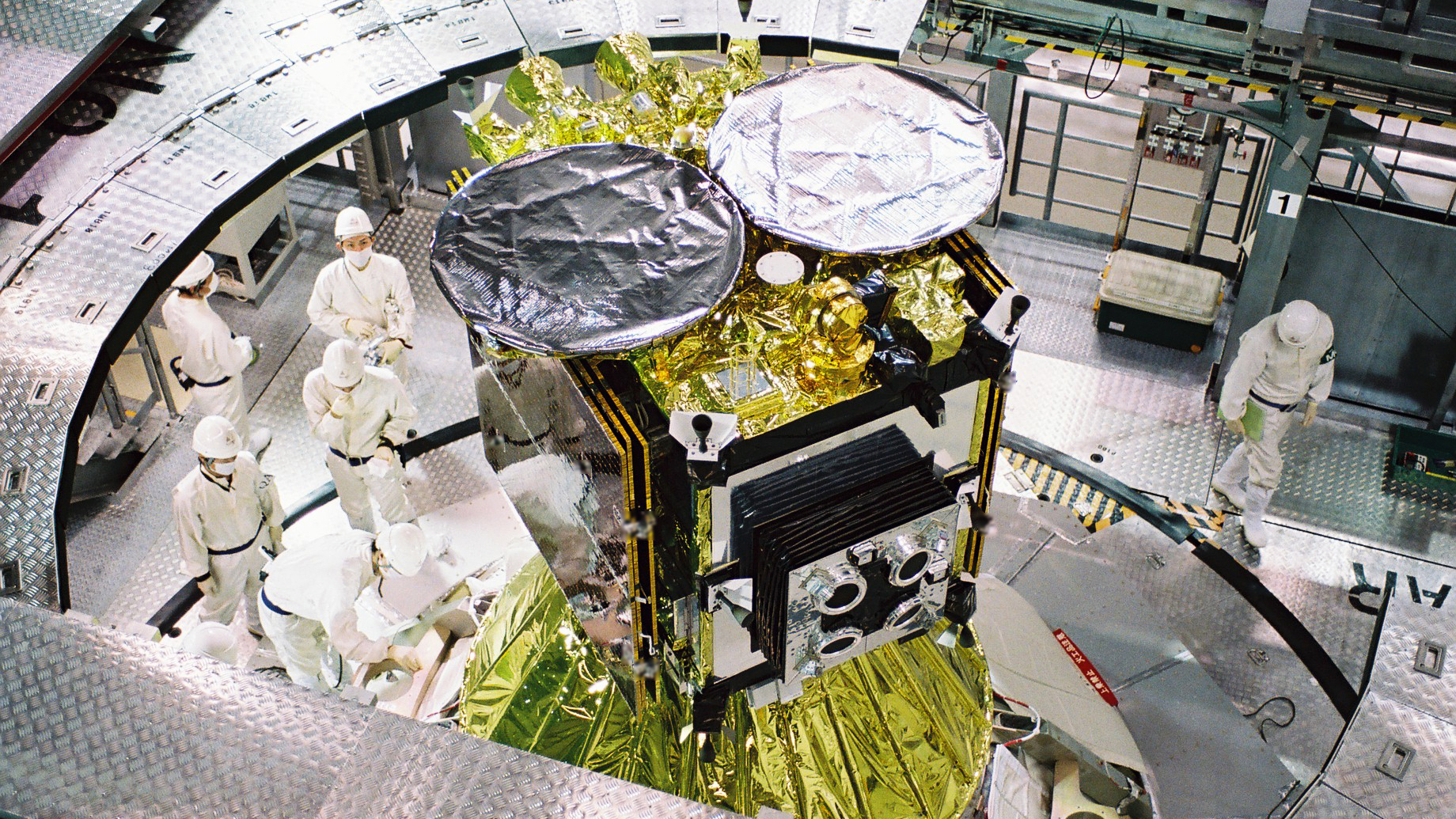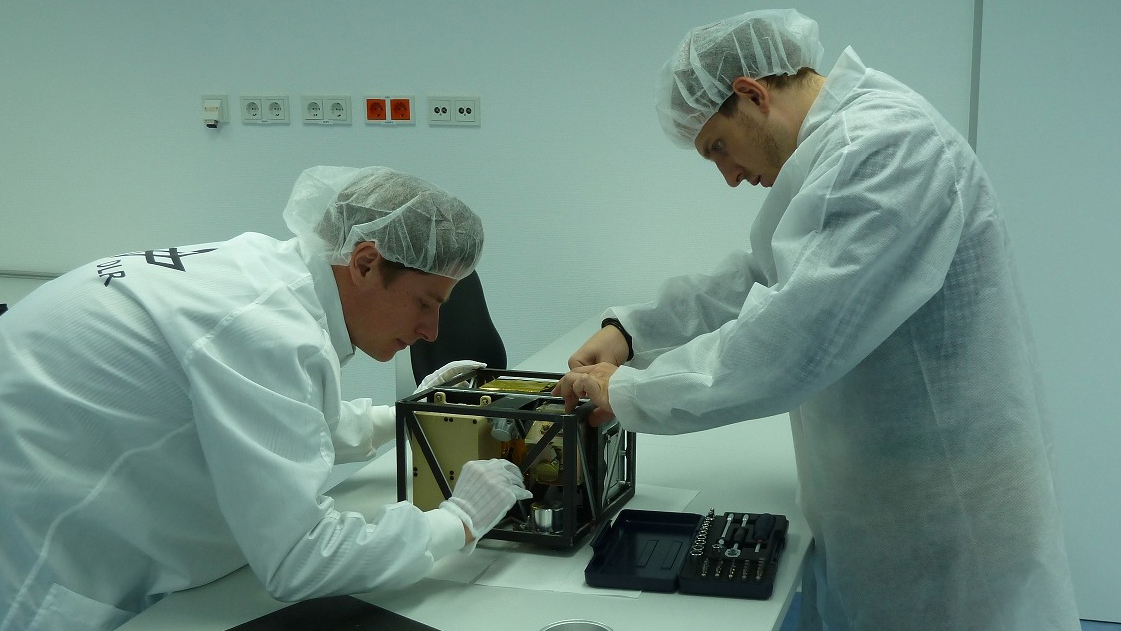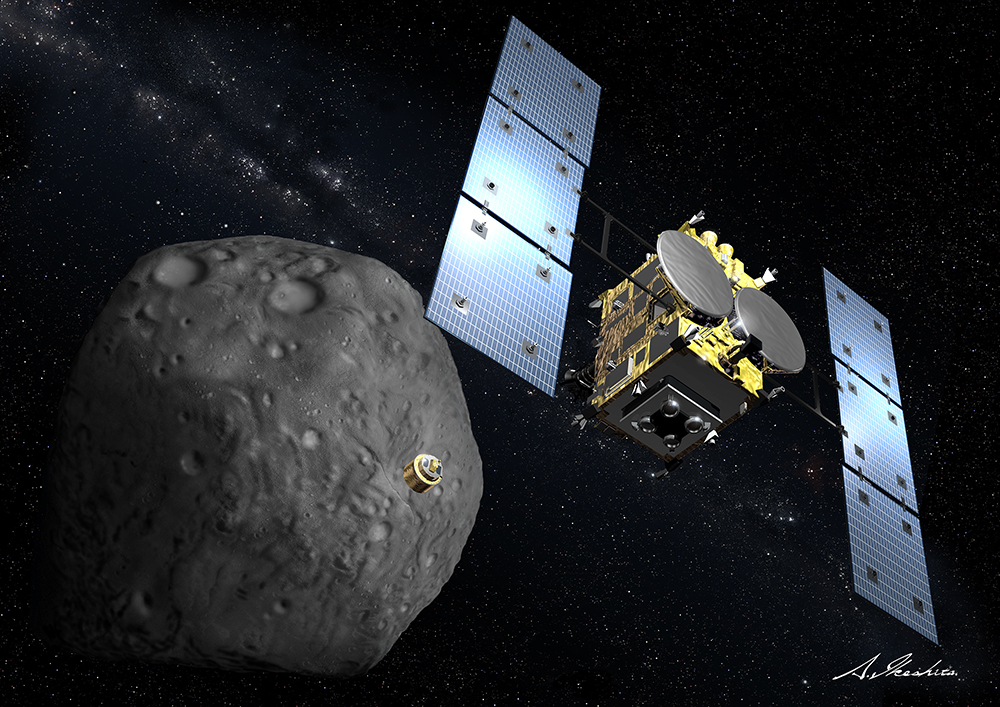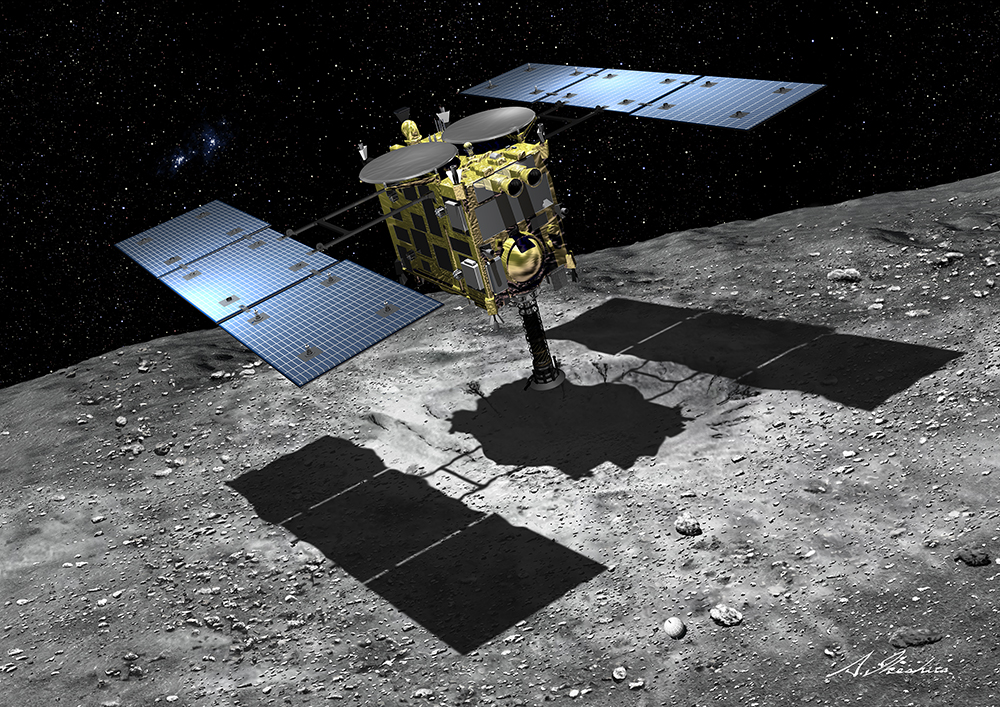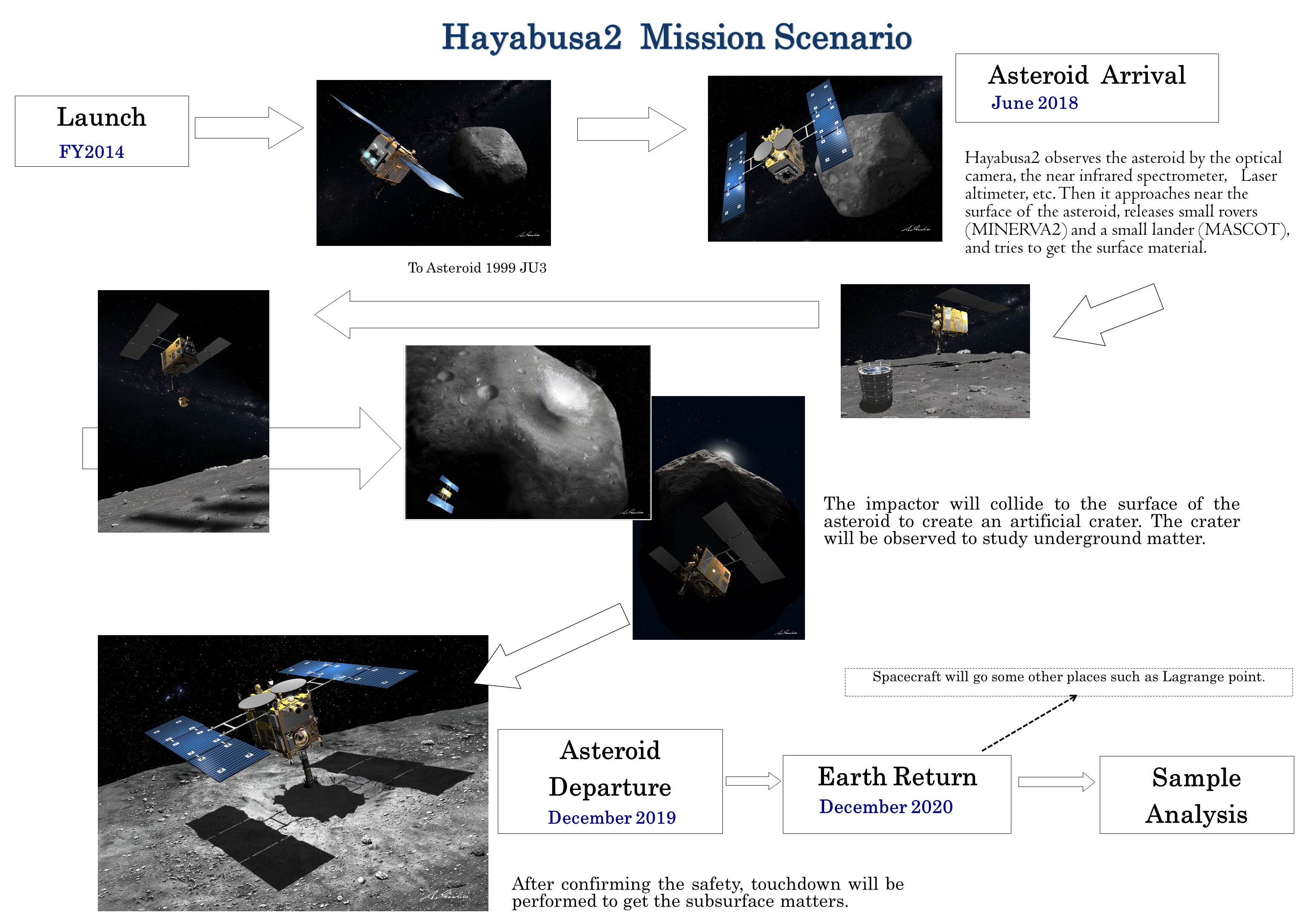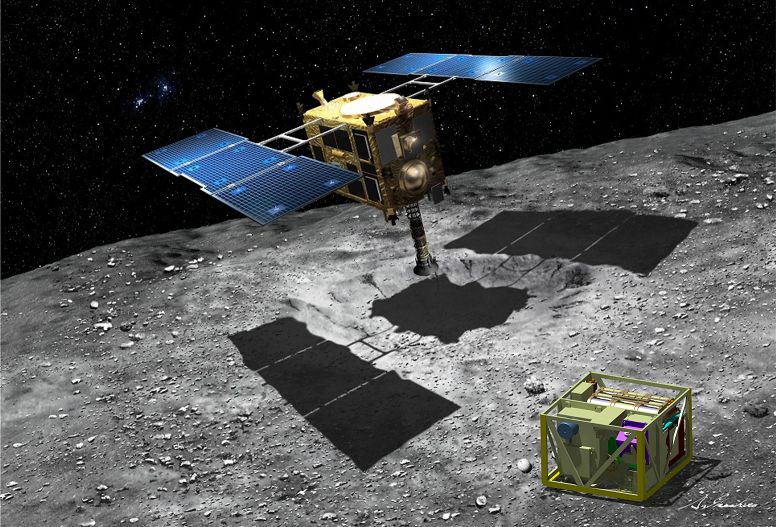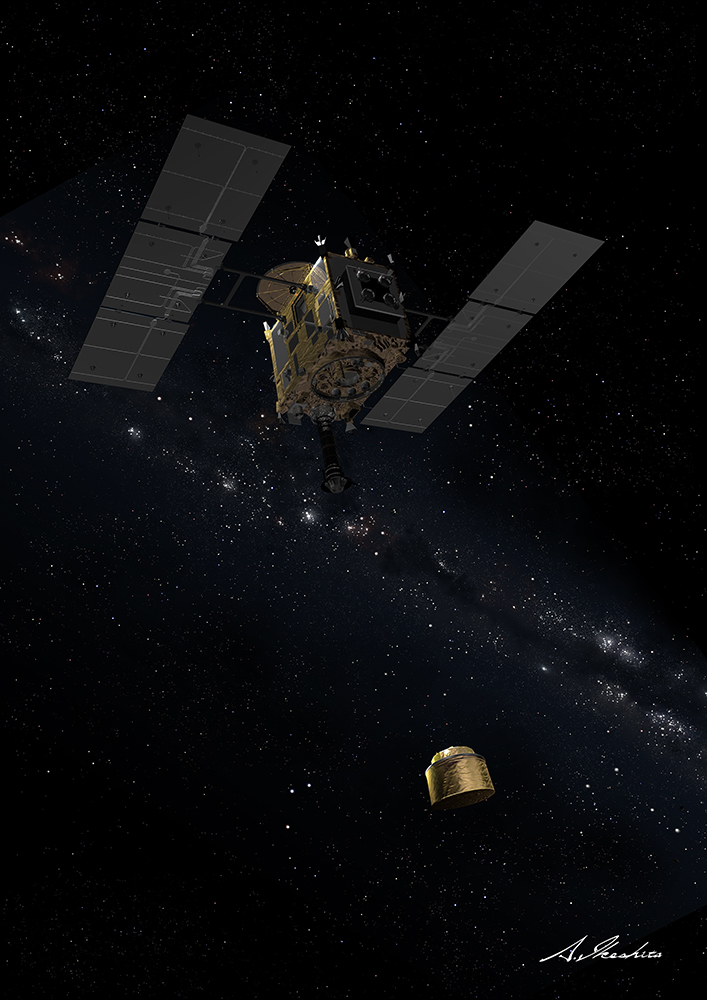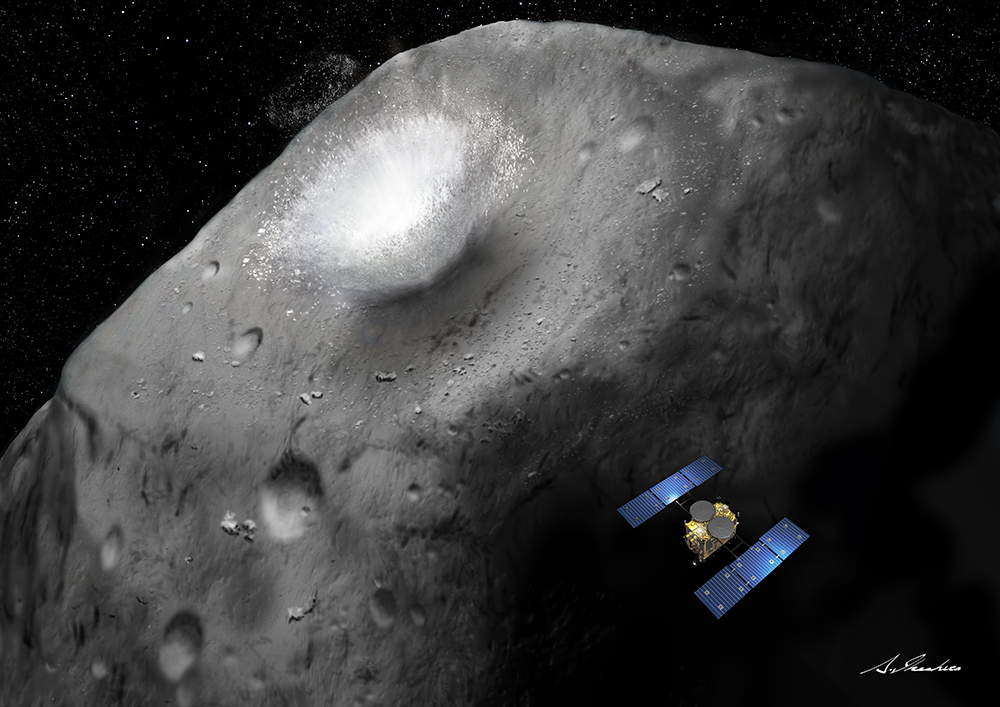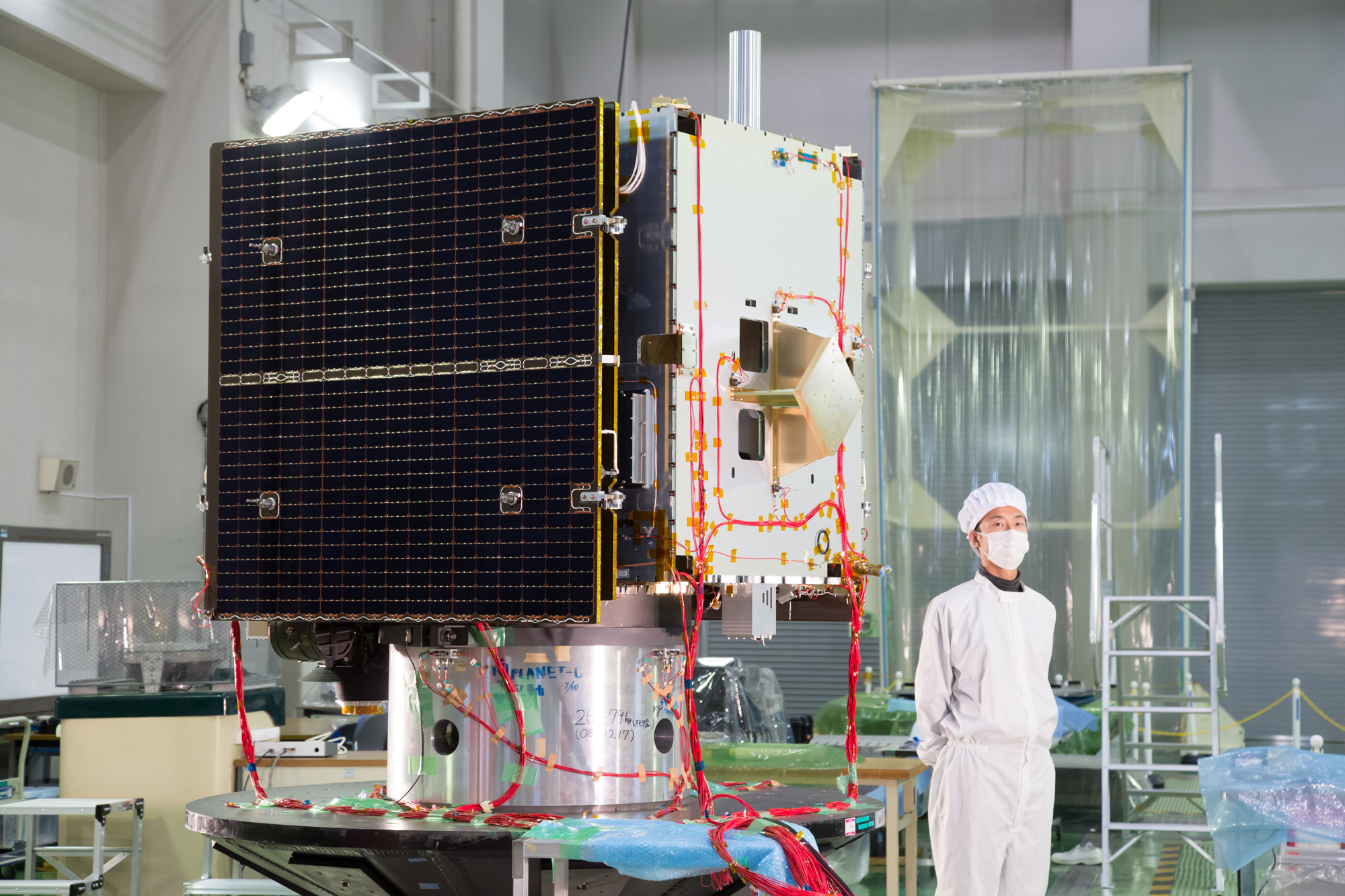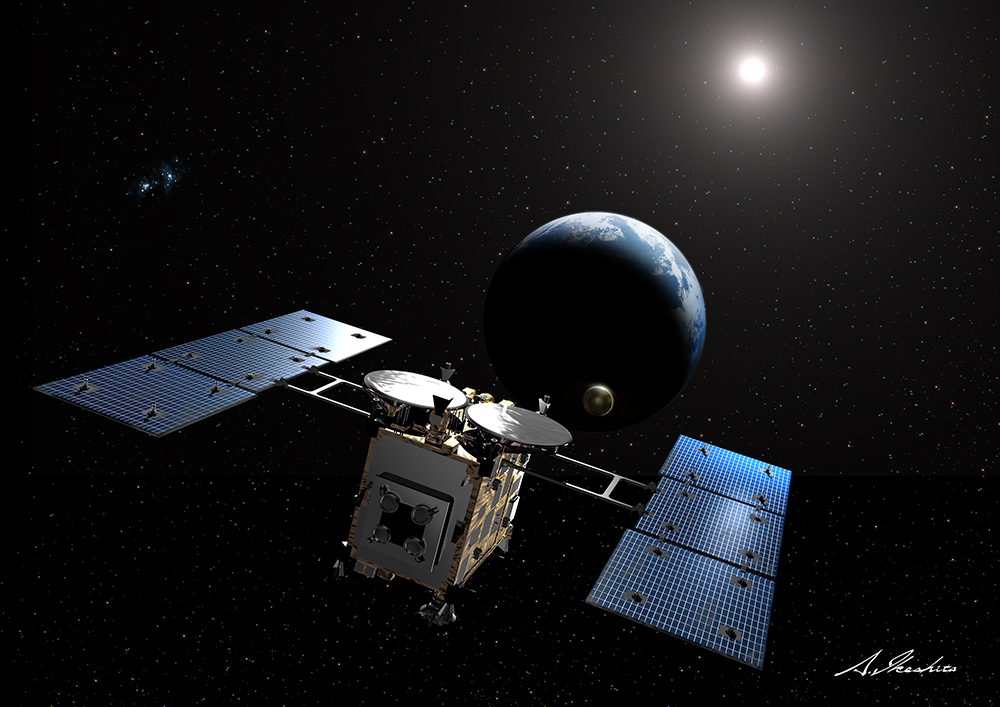Japan's Hayabusa2 Asteroid Ryugu Sample-Return Mission in Pictures
Ready for Launch
Engineers with the Japan Aerospace Exploration Agency work on Hayabusa2 as the asteroid probe is attached to its H-2A rocket ahead of a Dec. 3, 2014 (JST) launch target at the Tanegashima Space Center.
Germany's Mascot Lander for Hayabusa2
Integration of Germany’s Mobile Asteroid Surface Scout (MASCOT) asteroid lander, being readied to fly on Japan’s Hayabusa2 mission. To land on the asteroid 1999 JU3 in 2018.
Probe Away!
An artist's illustration of Hayabusa2 releasing a probe for a close-up study of the asteroid 1999 JU3.
Touchdown
The Hayabusa2 spacecraft is designed to collect samples of asteroid 1999 JU3 after blasting an artificial crater into the space rock using an impactor.
Hayabusa2: Step by Step
This series of images shows the different stages of Japan's Hayabusa2 mission during its 6-year flight.
MASCOT Lander
This image shows Hayabusa2's MASCOT asteroid lander (lower right) built by the German Aerospace Center (DLR) and French space agency CNES to investigate 1999 JU3.
Impactor Away
Hayabusa2 will release a probe to crash into asteroid 1999 JU3 with the goal of creating an artificial crater in the asteroid's surface.
Breaking space news, the latest updates on rocket launches, skywatching events and more!
Kapow!
This artist's illustration depicts the moment of impact when the Hayabusa2 probe's impactor strikes asteroid 1999 JU3, a major milestone of the mission.
Japan's Hayabusa2 Spacecraft Revealed
Japan unveils the Hayabusa2 asteroid probe on Dec. 26, 2012, during an event at JAXA's Sagamihara Campus. The spacecraft will launch in 2014 to collect samples of the asteroid 1999 JU3.
Homeward Bound
Like its predecessor Hayabusa, the Hayabusa2 mission carries a sample-return capsule to return asteroid pieces to Earth. Here, the capsule is released for its homeward journey, something scientists will eagerly await in late 2020.

Tariq is the award-winning Editor-in-Chief of Space.com and joined the team in 2001. He covers human spaceflight, as well as skywatching and entertainment. He became Space.com's Editor-in-Chief in 2019. Before joining Space.com, Tariq was a staff reporter for The Los Angeles Times covering education and city beats in La Habra, Fullerton and Huntington Beach. He's a recipient of the 2022 Harry Kolcum Award for excellence in space reporting and the 2025 Space Pioneer Award from the National Space Society. He is an Eagle Scout and Space Camp alum with journalism degrees from the USC and NYU. You can find Tariq at Space.com and as the co-host to the This Week In Space podcast on the TWiT network. To see his latest project, you can follow Tariq on Twitter @tariqjmalik.
